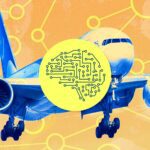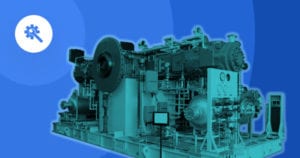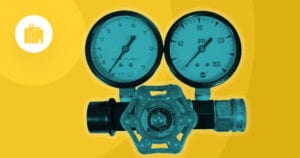
IoT in Airports – Think back to your most recent experience at the airport. For all its romance of a bygone era, the airport experience has become a drag.
You show up hours early only to stand in line after line, with harried TSA agents doing their best to stay positive or at least neutral as they deal with hordes of worn-out and tired passengers just trying to get home.
As a passenger, the security checkpoints can feel demeaning and impersonal. Remove your belt, take off your shoes, no, sir, you don’t have to take off your shoes, we changed our policy on that, please stop hopping on one foot.
Once you get to the gate, you sit around for an hour or run breathlessly through the airport only to show up and find there was a five minute delay anyway. You wait for your Zone to be called for boarding and ask yourself why they chose the word Zone when everyone crowds around the entrance in a meaningless blob. The plane won’t leave without you, folks.
Finally, you board and bump and tersely, yet politely, say “Excuse me, please,” while fighting for overhead bin space. When you fall into your seat, you try to concentrate on the “Top 5,000 Food Destinations in Orlando” in Generic Travel Magazine Quarterly when it hits you: did you leave the oven on?
There has to be another way.
Imagining the IoT Airport of the Future
With the Internet of Things, there is. The experience can change for the better, and significantly so. Connected technology can help reduce wait times, increase security, and simply give passengers a better user experience.
And the best part? The underlying technologies to do so are here, even if they aren’t broadly adopted by airports quite yet. Let’s examine how the experience changes.
Luggage
First, you walk in the entrance and look at the sign for departing flights. It knows the planes associated with those standing nearby thanks to low-energy bluetooth beacons and puts those flights in a highlighted category at the top. You’ve got 35 minutes until your international flight, plenty of time.
You walk to drop off your checked baggage and put it on the scale. It measures the weight, calculates a total, and you pay on your smartwatch. The baggage is tracked throughout the process, and you can check to see where it’s going at any time.
Temperature, humidity, and g-force sensors in the smart bag help give it a health rating you can check on your phone at any time. If the bag is opened, you will know, and there are smart tags on all your valuables so you can track if they were removed.
When your luggage gets out of range of your watch, it automatically locks (but you can use the on-board finger scanner to unlock it if your watch is dead). The TSA has the ability to open or close the bag, but a history of who does so is tracked. Together, these measures can virtually eliminate the problem of things disappearing from your luggage.
Security
You stroll over to the security checkpoint and start walking down a short tunnel. The TSA agent at the other end smiles as you walk through. The tunnel does a few things.
First, it communicates with your smartwatch. Your watch relays your carry-on’s contents (via an RFID reader reading tags on each thing inside), as well as who you are and what plane you are boarding. The security guard operator has a HoloLens that allows her to see meta information about each person walking through the tunnel, including if their bag has been scanned and cleared.
You’ve opted-in to facial recognition, so a face scan confirms your identity. Divorcing travel information from your identity, the system uses blockchain technology to match with your previous trips and assigns a risk factor using an open-source algorithm that is constantly improved to decrease false positives and checked by researchers to guard against bias.
As you walk through the tunnel, it scans to make sure you aren’t carrying anything dangerous. Algorithms flag potential security issues or obstructed views, which are confirmed by TSA agents working behind a wall (so your scanned image is dissociated from your person).
They alert the TSA agent at the other end of the tunnel to flag you down if there is a potential problem, otherwise your watch and the tunnel illuminate green to inform you that you are good-to-go. If you accidentally forgot you had your pocket knife on you, the watch turns red and directs you to a manual check.
Those without smart devices or bags are still able to walk through the tunnel, they just drop their luggage off to the right before entering. And while they may not get notifications on their watch, they still get lights within the tunnel indicating that they can walk right through.
Boarding
After you leave the tunnel, your watch silently illuminates with a notification to get directions to your gate if you’d like them. Bluetooth Low Energy beacons inform you of your location within the terminal, and your watch indicates a countdown to boarding.
Your boarding time is slightly different than everyone else’s to eliminate the line to get on the plane, and the first to board are those with window seats. With ten minutes to spare, you decide to grab a coffee on the way to the gate.
At the gate, you scan your watch on an NFC reader and the flight attendant smiles and welcomes you. He knows your name and your seat, and kindly directs you to it. On the side of the seat, your row number illuminates a specific color and pulses at a frequency that matches a pulsing light on your watch until you sit down.
As you settle into your seat and close your eyes, you ask yourself if you left your oven on. You pull out your phone and check your home monitoring app.
Nope, everything is fine. You snuggle into the corner and start in on “Top 5,000 Food Destinations in Orlando” in Generic Travel Magazine Quarterly. Who writes this stuff, anyway?





 Related Podcast Episode
Related Podcast Episode




 Related Applications
Related Applications


 Latest IoT News
Latest IoT News







